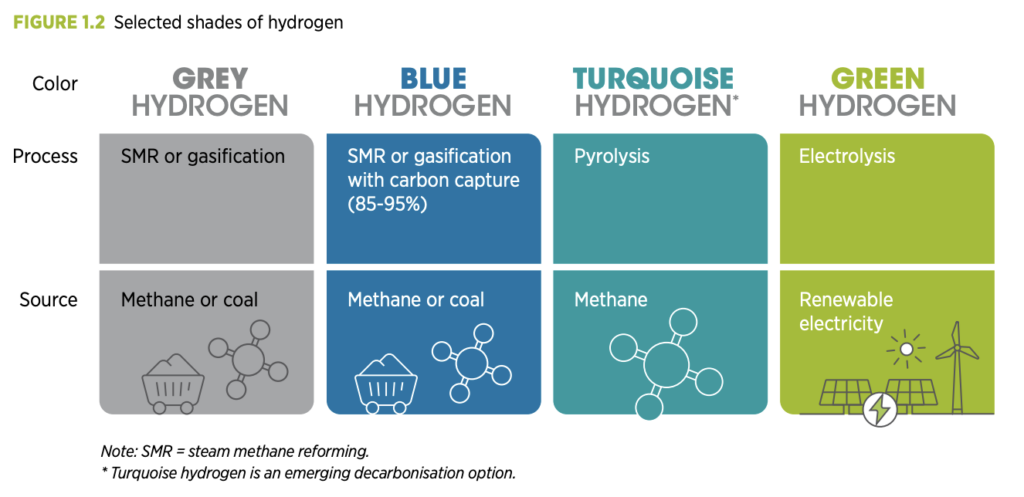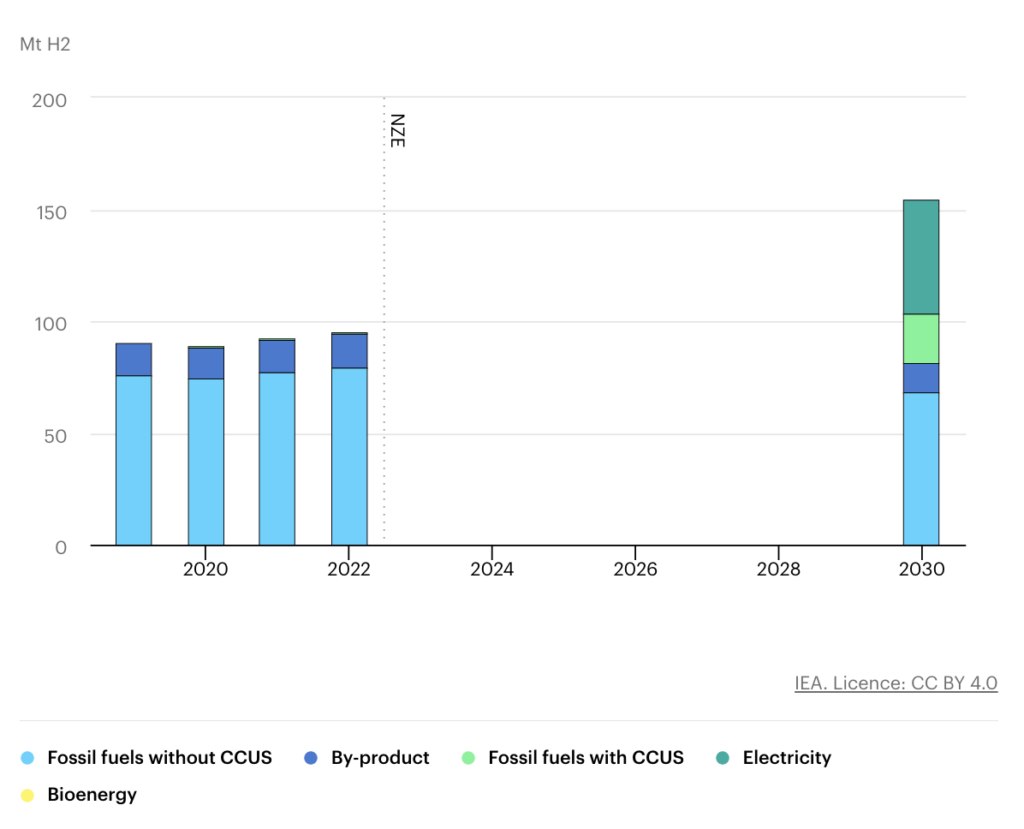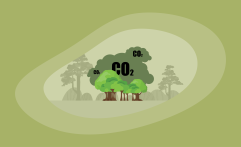Hydrogen Explained: All You Need to Know
Affiliate Disclosure
Hey fellow impactful ninja ?
You may have noticed that Impactful Ninja is all about providing helpful information to make a positive impact on the world and society. And that we love to link back to where we found all the information for each of our posts.
Most of these links are informational-based for you to check out their primary sources with one click.
But some of these links are so-called "affiliate links" to products that we recommend.
Why do we add these product links?
First and foremost, because we believe that they add value to you. For example, when we wrote a post about the environmental impact of long showers, we came across an EPA recommendation to use WaterSense showerheads. So we linked to where you can find them. Or, for many of our posts, we also link to our favorite books on that topic so that you can get a much more holistic overview than one single blog post could provide.
And when there is an affiliate program for these products, we sign up for it. For example, as Amazon Associates, we earn from qualifying purchases.
What do these affiliate links mean for you?
First, and most importantly, we still only recommend products that we believe add value for you.
When you buy something through one of our affiliate links, we may earn a small commission - but at no additional costs to you.
And when you buy something through a link that is not an affiliate link, we won’t receive any commission but we’ll still be happy to have helped you.
What do these affiliate links mean for us?
When we find products that we believe add value to you and the seller has an affiliate program, we sign up for it.
When you buy something through one of our affiliate links, we may earn a small commission (at no extra costs to you).
And at this point in time, all money is reinvested in sharing the most helpful content with you. This includes all operating costs for running this site and the content creation itself.
What does this mean for me personally?
You may have noticed by the way Impactful Ninja is operated that money is not the driving factor behind it. It is a passion project of mine and I love to share helpful information with you to make a positive impact on the world and society. However, it's a project in that I invest a lot of time and also quite some money.
Eventually, my dream is to one day turn this passion project into my full-time job and provide even more helpful information. But that's still a long time to go.
Stay impactful,
Hydrogen is one of the most abundant and versatile elements in the universe, and it can also be used as an energy source. Although hydrogen can have a low carbon footprint and produce very few waste products, it is only as clean as the methods used to produce it. So, we had to ask: What is hydrogen really, and how can it help mitigate climate change?
Hydrogen is a flammable gas that can be combusted or fed into fuel cells to generate energy. Hydrogen produces zero CO2 emissions when combusted, but its overall carbon footprint varies widely depending on the production pathway. The future of hydrogen remains uncertain due to various barriers.
Keep reading to find out all about what hydrogen is, its global capacity, its carbon footprint, its environmental benefits and drawbacks, and how it can mitigate climate change.
The Big Picture of Hydrogen
Hydrogen can contribute to the avoidance of greenhouse gas (GHG) emissions from the burning of fossil fuels (e.g., coal, oil, natural gas). The supply of fuel for hydrogen energy is virtually unlimited, but it is still classified as a nonrenewable energy source.
How Is Hydrogen Defined
Hydrogen is a colorless, odorless, tasteless, flammable gas and is the most abundant element in the universe.
“Hydrogen: a chemical element that is the lightest gas, has no color, taste, or smell, and combines with oxygen to form water”
Cambridge Dictionary
Although hydrogen constitutes roughly 75% of the universe’s mass, pure hydrogen exists in concentrations of only 0.5-1.0 parts per million in our atmosphere. Therefore, we must produce hydrogen from other compounds.
Hydrogen can be a source of clean energy because it emits zero carbon dioxide (CO2) when combusted if sourced via the electrolysis of renewable resources (e.g., solar and wind). The energy stored in hydrogen gas can also be used as a clean-burning fuel in various modes of transportation.
What Are the Different Types of Hydrogen
There are many different types of hydrogen that can be classified based on how it is produced.
- Gray hydrogen: Currently the most common method of hydrogen production. Hydrogen is produced from natural gas or methane via the process of steam reforming. CO2 is created during this process but is not captured or stored, as is done with blue hydrogen.
- Blue hydrogen: Hydrogen is produced from natural gas via the process of steam reforming. Natural gas is combined with steam to produce hydrogen and CO2. Carbon capture and storage is used to trap and store the emitted CO2.
- Green hydrogen: Hydrogen is produced by using renewable energy sources (i.e., solar, wind) to electrolyze water. Electrolysis splits water into hydrogen and oxygen, emitting zero CO2 in the process.
- Black and brown hydrogen: Hydrogen is produced by using coal. This is the most environmentally damaging method of producing hydrogen.
- Pink hydrogen: Hydrogen is produced from electrolysis powered by nuclear energy.
- Turquoise hydrogen: Hydrogen is produced from the process of methane pyrolysis, which produces hydrogen and solid carbon. This is a relatively new method that still needs to be studied to determine if it can produce low-emission hydrogen.
- Yellow hydrogen: Hydrogen is produced from electrolysis powered by solar power.
- White hydrogen: Naturally occurring hydrogen deposits found underground.
| What hydrogen is | Hydrogen is a colorless, odorless, tasteless, flammable gas and is the most abundant element in the universe. |
| What the different types hydrogen are | The different types of hydrogen are: gray, blue, green, black/brown, pink, turquoise, yellow, and white. Hydrogen is classified based on how it is produced. |
| How hydrogen works | Harnessing hydrogen energy involves first producing it from either fossil fuels or renewable energy. Then, it can either be burned directly or fed into a fuel cell, where it produces electricity and heat with only water vapor as a byproduct. |
| The global capacity of hydrogen | Currently, most of the hydrogen we produce is gray hydrogen that comes from fossil fuels, specifically natural gas. Green hydrogen produced from renewable energy accounts for less than 1% of total hydrogen production. The US and the EU lead the world in terms of hydrogen energy policy, whereas China leads the way in terms of deploying hydrogen energy technologies. |
| The carbon footprint of hydrogen | The carbon footprint of hydrogen varies widely depending on the specific production pathway. Once it has been produced, the carbon footprint of using hydrogen as an energy source in general is very low. |
| The environmental benefits of hydrogen | Hydrogen can have a low carbon footprint (depending on how it is sourced), help reduce global greenhouse gas emissions, and produce very few waste products. It is also extremely versatile and promotes energy security and independence. |
| The environmental drawbacks of hydrogen | Hydrogen can still come with emissions.It is also expensive to implement, with green hydrogen costing 2-7 times more than gray hydrogen. |
| Hydrogen and climate change | Hydrogen combats climate change by mitigating the temperature rise, sea-level rise, ice melting, and ocean acidification associated with global warming. |
How Does Hydrogen Work
Hydrogen is commonly referred to as an energy carrier because pure hydrogen exists rarely in nature. To harness hydrogen energy, we must first produce it from either fossil fuels or renewable energy. Once produced, we can either burn it directly or feed it into a fuel cell, where it produces electricity and heat with only water vapor as a byproduct.
How Is Hydrogen Currently Produced
The two main ways we currently produce hydrogen are:
- Steam-methane reforming: In this process, steam reacts with the methane in hydrocarbon fuels (natural gas, diesel, renewable liquid fuels, gasified coal, or gasified biomass) to produce hydrogen. This type of hydrogen is classified as gray hydrogen. Today, approximately 95% of all hydrogen is produced specifically from natural gas steam reforming.
- Electrolysis: In the process of electrolysis, water is separated into hydrogen and oxygen by an electrolyzer. Electrolyzers function in the opposite manner as fuel cells. Instead of using the energy of a hydrogen molecule, it creates hydrogen from water molecules. This type of hydrogen is classified as green hydrogen.

How Does Hydrogen Actually Produce Energy
The most common way to generate hydrogen energy is via the use of hydrogen fuel cells. Hydrogen fuel cells operate in the same manner as batteries, but they do not need to be recharged. They can continue producing electricity and heat so long as there is a constant supply of fuel (hydrogen gas).
A fuel cell consists of two electrodes, a negatively charged anode and a positively charged cathode with a porous, electrolyte membrane in between them.
Hydrogen fuel cells operate in the following manner:
- Hydrogen gas is fed to the anode and air is fed to the cathode
- A catalyst at the anode splits hydrogen molecules into protons and electrons
- The protons pass through the electrolyte membrane and combine with electrons and oxygen to produce water molecules
- The electrons are forced through a circuit, where they generate electricity and heat as a byproduct
What Is the Global Capacity of Hydrogen
The global hydrogen market has remained relatively stable in recent years, with demand fluctuating between 90.4 million tons in 2019 and 95 million tons in 2022.
- More than 90% of the hydrogen we produce comes from natural gas, coal, or oil (gray hydrogen),
- with less than 1% coming from electrolysis or renewable energy sources (green hydrogen).
In terms of hydrogen policy, the United States and the European Union are world leaders.
- In 2023, the European Union agreed that 42% of hydrogen used in industry should come from renewable fuels by 2030 and 60% by 2035.
- Additionally, in 2023, the US announced a $750 million program aimed at spearheading research and development into reducing the cost of green hydrogen.
China is the world leader In terms of deployment of hydrogen energy technologies.
- China produces and consumes more hydrogen than any other country.
- In 2022, they had 200 MW of installed hydrogen energy capacity, representing over 30% of the global capacity.
China also has the world’s largest green hydrogen-producing facility in the world, the Kuqa project in Xinjiang.
- The 260 MW plant uses solar energy to electrolyze water and produce hydrogen. It currently produces 10,000 tons of hydrogen a year and will be able to produce 20,000 tons of hydrogen when at full capacity.
- The green hydrogen produced is used to replace gray hydrogen produced from natural gas at a nearby oil refinery.
The most common application of green hydrogen currently is to power different modes of transportation, primarily vehicles.
- Vehicles that are powered by hydrogen are called fuel cell electric vehicles (FCEV). In 2022, there were over 72,000 FCEVs on the world’s roads, a 40% increase compared to 2021.
- However, this still lags behind non-hydrogen electric cars, which exceeded 10 million.
The future of hydrogen energy will involve pivoting towards green hydrogen, which is produced via electrolysis powered by renewable energy sources (i.e. solar and wind). Many future hydrogen energy technologies have already done this; however, in order to stay on track with the International Energy Agency’s (IEA) Net Zero Emissions by 2050 Scenario (NZE), hydrogen energy still needs to grow more than 100-fold by 2030.
More specifically, we will need to produce 50 million tons of hydrogen from electrolysis and 30 million tons of hydrogen from fossil fuels with carbon capture and storage by 2030. This will require more than 550 gigawatts of electrolyzers.

What Is the Carbon Footprint of Hydrogen
The carbon footprint is one of the ways we measure the effects of human-induced global climate change. It primarily focuses on the greenhouse gas (GHG) emissions associated with consumption and includes other emissions such as methane (CH4), nitrous oxide, and chlorofluorocarbons (CFCs).
“Carbon footprint: the amount of greenhouse gasses and specifically carbon dioxide emitted by something (such as a person’s activities or a product’s manufacture and transport) during a given period”
Merriam Webster
Basically, it is the amount of carbon emitted by an activity or an organization. This includes GHG emissions from fuel that we burn directly (e.g., heating a home or driving a car) and GHG emissions from manufacturing the products that we use (e.g., power plants, factories, and landfills).
The carbon footprint of hydrogen varies widely depending on the specific production pathway. For example, we currently produce 95% of our hydrogen from coal and natural gas, which emit 820 and 490 grams of carbon dioxide (CO2) equivalent per kWh, the second and third-highest out of all fuel types. In contrast, sourcing hydrogen from solar energy produces a fraction of the CO2 emissions.
Once it has been produced, the carbon footprint of using hydrogen as an energy source in general is very low. Hydrogen is a clean burning fuel, meaning it produces only water and warm air as byproducts.
Have a look at the illustration below to see the average life-cycle CO2 equivalent emissions of different energy sources and how they compare to hydrogen.

| The life-cycle stages of hydrogen | Each stage’s carbon footprint |
| Building of hydrogen | CO2 emissions vary depending on the production pathway. Sourcing hydrogen from fossil fuels emits significantly more CO2 than sourcing hydrogen from renewable energy. |
| Operating of hydrogen | Little to no CO2 emissions or waste products |
| Building back of hydrogen | CO2 emissions from utilizing construction equipment to demolish the buildings and construct new buildings in the old steam-methane reforming/electrolysis plants’ place |
The total carbon footprint of hydrogen would equal the carbon footprint from building + the carbon footprint from operating + the carbon footprint from building back.
Because hydrogen energy technology is relatively new, there is not much historical data on its life expectancy. For example, the first hydrogen fuel cell electric vehicle in the US was only introduced in 2014.
How Environmentally Friendly Is Hydrogen
Hydrogen has different levels of environmental friendliness depending on how it is sourced, but it produces very little emissions when combusted or used in fuel cells.
“Environmentally friendly: (of products) not harming the environment.”
Cambridge Dictionary
Both the environmental benefits and drawbacks of hydrogen must be taken into consideration when discussing the larger issue of climate change.
What Are The Environmental Benefits of Hydrogen
Hydrogen can potentially play a key role in the clean energy movement. This is because:
- Hydrogen has a low carbon footprint: Hydrogen emits no CO2 when combusted or when used in fuel cells to produce electricity, making its carbon footprint very low.
- Hydrogen can reduce global greenhouse gas emissions (GHGs): When producing hydrogen from natural gas and accounting for the delivery and storage of hydrogen for use in FCEVs, hydrogen can still cut GHG emissions by 50% and reduce petroleum consumption by 90%.
- Hydrogen produces very few waste products: Water and warm air are the only waste products associated with the chemical reaction inside a hydrogen fuel cell.
- Hydrogen is a versatile element: Hydrogen gas can be produced from renewable energy, coal, oil, natural gas, or nuclear power. It can be transported by pipeline, ship, or plane and can be burned to produce electricity or compressed down into a liquid transportation fuel.
- Hydrogen promotes energy security: Hydrogen can bolster energy security by reducing dependence on foreign imports, reducing price volatility, and diversifying our energy mix to increase flexibility and resilience.
- Hydrogen promotes energy independence: Being able to produce your own electricity without the aid of foreign countries is an important step in becoming self-sufficient. For example, former President George W. Bush signed the Energy Independence and Security Act of 2007 to reduce US dependence on oil, expand the production of renewable energy, and confront global climate change.
What Are The Environmental Drawbacks of Hydrogen
Hydrogen energy can still come with emissions, depending on how it is sourced. Natural gas is currently the top provider of hydrogen, and 7.5 billion tons of CO2 every year occur because of natural gas combustion.
Although the CO2 emissions from the combustion of natural gas are about 50%-60% less than those from coal and oil, the primary component of natural gas is methane (CH4), a gas 34 times stronger at trapping heat than CO2 over 100 years. This means that a little CH4 can go a long way when contributing to global warming, and the more hydrogen we produce from natural gas, the more CO2 and CH4 emissions occur.
A way to avoid this environmental drawback is to acquire hydrogen from low-carbon sources including solar power and wind power. These emit between 38-48 (solar) and 11-12 (wind) grams of CO2 equivalent per kWh of electricity produced, compared to 490 grams for natural gas. Another option is to acquire hydrogen from landfills and sewage treatment facilities, so long as CH4 leaks are properly controlled.
What Are Other Drawbacks of Hydrogen
The other main drawback associated with hydrogen is the cost of producing it. Experts estimate it can cost 2 to 7 times more money to produce hydrogen from renewables (i.e., hydro-, wind-, solar energy) than it does to produce hydrogen from natural gas. One estimate puts the price of producing hydrogen from natural gas at $1.50 per kilogram and the price of producing hydrogen from renewables at $5 per kilogram.
Capital investments and targeted policies will be necessary to close the price gap between hydrogen sourced from fossil fuels vs. renewables. So far, the countries investing in hydrogen have committed $37 billion (B) to research and development. For example, Germany has set a target of 5GW domestic capacity by 2030 and will spend 9 billion Euros (€9bn) on clean hydrogen production and exporting technology.
But although the private sector has invested another $300B, this is still below the estimated $1,200B needed by 2030 in order to stay on the path to net zero by 2050.
Why Is Hydrogen Important to Fight Climate Change
Climate change is arguably the most severe, long-term, global impact of fossil fuel combustion. Every year, approximately 33 billion tons (bt) of CO2 are emitted from burning fossil fuels. The carbon found in fossil fuels reacts with oxygen in the air to produce CO2. This warms the earth by acting as a heating blanket, and a warmer earth comes with a host of negative side effects.
Using hydrogen instead of fossil fuel energy helps mitigate the following negative effects of climate change:
- Increasing temperatures: Earth’s atmosphere has warmed 1.5°C since 1880. This may not seem like a lot, but these degrees create regional and seasonal temperature extremes, reduce sea ice, intensify rainfall and drought severity, and change habitat ranges for plants and animals.
- Rising sea levels: Global sea levels have increased approximately 8-9 inches since 1880, displacing people living along coastlines and destroying coastal habitats. Roads, bridges, subways, water supplies, oil and gas wells, power plants, sewage treatment plants, and landfills remain at risk if sea level rise goes unchecked.
- Melting of sea ice: Since 1979, arctic sea ice has declined by 30%. Sea ice plays a major role in regulating the earth’s climate by reflecting sunlight into space and providing habitat for animal species. If all of the glaciers on Earth melted, sea levels would rise by approximately 70 feet, effectively flooding out every coastal city on the planet.
- Changing precipitation patterns: Extreme weather events (e.g., hurricanes, floods, droughts) are becoming more common and more intense. Storm-affected areas will experience increased precipitation and flooding whereas areas located further from storm tracks will experience decreased precipitation and droughts.
- Ocean acidification: The ocean absorbs 30% of the CO2 released into the atmosphere, which decreases the pH (increases the acidity) of the ocean. In the past 200 years, the pH of oceans has decreased by 0.1 pH units, which translates to a 30% increase in acidity. Aquatic life unable to adjust to this rapid acidification will die off. A prime example of this is coral bleaching, where coral expels the algae (zooxanthellae) living in their tissues as a result of changes in temperature, light, or nutrients.
The more we reduce CO2 emissions, the more we slow the rate of temperature rise, sea-level rise, ice melting, and ocean acidification. When these rates are slowed, the earth’s biodiversity does not have to struggle to adapt to temperature and pH changes. People will not be displaced due to the flooding of coastal areas. And icebergs will continue to provide climate regulation.
To help keep global temperature rise below 1.5°C, as outlined in the Paris Agreement, we must shift at least 80% of our electricity generation to low-carbon sources. Over 140 countries have stated a net-zero target, covering roughly 88% of the world’s emissions. However, under current conditions, global emissions are projected to increase by 9% by 2030 instead of the 45% reduction in emissions that is needed.
Final Thoughts
Hydrogen is a colorless, odorless, flammable gas that can be combusted or fed into fuel cells to generate electricity. It is clean burning, meaning it emits only water and heat as byproducts. Currently, we source over 90% of our hydrogen from fossil fuels and only 1% from renewables.
Despite numerous environmental benefits if sourced via renewable energy, hydrogen faces an uncertain future as an energy source. It can cost 2-7 times more to produce green hydrogen than gray hydrogen; therefore, targeted policies and support will be necessary in the future if hydrogen is to play a substantial role in the clean energy transition.
Stay impactful,

Sources
- Impactful Ninja: The History of Hydrogen – The Big Picture
- Impactful Ninja: Fossil Fuel Energy Explained: All You Need to Know
- Impactful Ninja: Coal Energy Explained: All You Need to Know
- Impactful Ninja: Oil Energy Explained: All You Need to Know
- Impactful Ninja: Natural Gas Energy Explained: All You Need to Know
- National Geographic: Nonrenewable Energy
- Britannica: Hydrogen | Properties, Uses, & Facts
- National Grid Group: What is hydrogen? | Hydrogen energy explained
- National Grid Group: The hydrogen colour spectrum
- The National Renewable Energy Laboratory: Hydrogen Basics
- Office of Energy Efficiency and Renewable Energy: Hydrogen Fuel Basics
- International Renewable Energy Agency: Selected Shades of Hydrogen
- Office of Energy Efficiency and Renewable Energy: Fuel Cells
- Britannica: Anode
- Britannica: Cathode
- Fuel Cell & Hydrogen Energy Association: Fuel Cell Basics
- International Energy Agency: Global hydrogen demand by sector in the Net Zero Scenario, 2020-2030
- Forbes: Shades Of Gray, Blue And Green: Future Of (Sustainable) Hydrogen Economy
- Consilium: Council and Parliament reach provisional deal on renewable energy directive
- US Department of Energy: Biden-Harris Administration Announces $750 Million to Advance Clean Hydrogen Technologies
- World Economic Forum: Which countries could become the world’s hydrogen superpowers?
- International Energy Agency: Executive summary – Global Hydrogen Review 2023 – Analysis
- Hydrogen Insight: World’s largest green hydrogen project begins production in China
- Reuters: Sinopec’s first green hydrogen plant starts production in Xinjiang
- US Department of Energy Efficiency and Renewable Energy: Alternative Fuels Data Center – Fuel Cell Electric Vehicles
- Hydrogen Insight: The number of hydrogen fuel-cell vehicles on the world’s roads grew by 40% in 2022, says IEA report
- The International Energy Agency: Homepage
- The International Energy Agency: Net Zero Emissions by 2050 Scenario
- The International Energy Agency: Hydrogen
- International Energy Agency: Global hydrogen production by technology in the Net Zero Scenario, 2019-2030
- Britannica: Carbon Footprint
- United States Environmental Protection Agency: System of Registries
- World Nuclear Association: Carbon Dioxide Emissions From Electricity
- World Nuclear Association: Average life-cycle CO2 equivalent emissions
- Union of Concerned Scientists: How Clean Are Hydrogen Fuel Cell Electric Vehicles?
- Impactful Ninja: What Is the Carbon Footprint of Hydrogen Fuel? A Life-Cycle Assessment
- Hydrogen Production: Natural Gas Reforming | Department of Energy
- The Future of Hydrogen – Analysis – IEA
- Geopolitics of the Energy Transformation: The Hydrogen Factor
- White House Archives: Fact Sheet – Energy Independence and Security Act of 2007
- United States Environmental Protection Agency: Summary of the Energy Independence and Security Act
- International Energy Agency: Decisive action by governments is critical to unlock growth for low-carbon hydrogen
- CNBC: Hydrogen power is gaining momentum, but critics say it’s neither efficient nor green enough
- Carbon Brief: In-depth Q&A: Does the world need hydrogen to solve climate change?
- National Wildlife Federation: Climate Change
- National Oceanic and Atmospheric Administration: Climate Change: Global Temperature
- National Oceanic and Atmospheric Administration: Climate Change: Global Sea Level
- United States Geological Survey: How would sea level change if all glaciers melted?
- The National Aeronautics and Space Administration: How does climate change affect precipitation?
- National Oceanic and Atmospheric Administration: Ocean acidification
- The United Nations Framework Convention on Climate Change: The Paris Agreement
- United Nations: Net Zero Coalition




